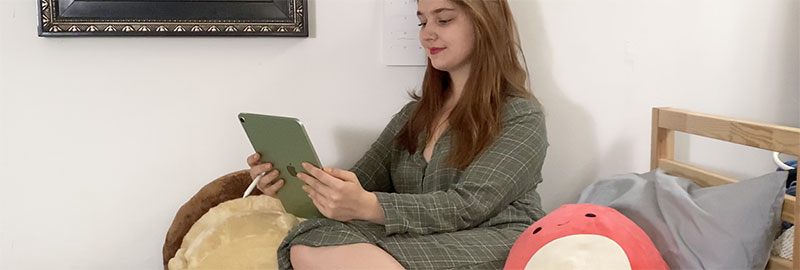Fan Art is often where many young artists begin, but there’s a time and place for it, and inevitably copyright issues and ownership make it a more complicated subject.

Read high school student Iris Yip’s short article on the subject or watch Art Prof’s in depth video with Teaching Artists Cat Huang and Jordan McCracken-Foster.
Fan art is often where many young artists begin! This video explores and discusses the role fan art during childhood to the role fan art can have today in the life of a professional artist.
Related topics such as selling fan art, copyright, and more are explored as well. Discussion led by Teaching Artists Jordan McCracken-Foster and Cat Huang.
FILMS MENTIONED
- Spiderman 2
- Yellow Submarine
- Song of the Sea
- Castle in the Sky
- Princess Mononoke
- The Hunchback of Notre Dame
- The Emperor’s New Groove
- Tarzan
- The Lion King
Podcasts MENTIONED
books mentioned
ARTISTS MENTIONED
TV SHOWS MENTIONED
- Avatar: The Last Airbender
- Tom & Jerry
- Looney Tunes
- The Clone Wars
- Sonic the Hedgehog
- Jak & Daxter

The Ethics of Fan Art: When and Where You Should, and Shouldn’t
By Iris Yip
If you’ve spent any time on social media, you’ve probably seen plenty of fan art. If you haven’t seen fanart before, the term refers to artwork derived from a series or character by anyone who is not the creator of the original artwork.

My first experience with strong opposition to fan art started with my middle-school art teacher tutting disapprovingly when the topic of ‘fan art’ arose amongst my little clique of budding artists back then.
“Fan art is no good. It’s illegal, and it’s not creative at all.”
Of course, this broke my tragic angst-filled seventh grade heart. Up until that point, I had done a lot of fanart, and not once had I thought of it as a bad thing. After all, so many people do it!

So, should you make fanart? In my opinion, this depends on the situation. Let’s say you’re an aspiring art student submitting your portfolio for art school admissions. You’ve got a really well-made digital illustration that you’d love to add—the only problem is that it’s fanart of Naruto.
This is a big no-no. The truth is, many people are completely unaccepting of fanart—for many different reasons. And this case, it doesn’t really matter why because there are just so many conflicting legal matter deeply embedded in fanart.
I doubt tempting any of those would work out in your favor in the application process, seeing as the utmost professionalism is absolutely expected from the art school applicants. My opinion is that if including fanart makes or breaks your application, better safe than sorry.
Secondly, fanart can be incredibly… underwhelming. I’m probably the first person to advocate for the fact that whether or not something is fanart does not determine the quality or formal elements of it.
Stunning color usage and anatomy doesn’t just go down the trash chute because your subject happens to be Sailor Moon.

Fanart doesn’t really say anything about your skill level. However, that’s precisely the problem. Fanart doesn’t say anything other than the fact you’re a fan of the franchise. Sure, it can be nice to look at, which in itself is not a problem, but is it going to help you stand out?
Probably not. Fanart prevents you from showing your creations and ideas. In the professional world, innovation is just as important as technical skill, if not more so.
This doesn’t mean I don’t think fanart can be useful and fun, I do believe there’s a difference between what is appropriate for a professional setting and art that brings you and your community joy.
Fan art allows fans to indulge in their favorite series and characters past what the original source material has to offer, often times giving the fans a new perspective altogether.
Thanks to fanart, I’ve gotten the opportunity to meet and develop meaningful relationships with many other aspiring artists and people with similar interests to my own.

When I started out on social media, it was pretty difficult for me to interact with people since I wasn’t so naturally outgoing and the idea of interacting with someone who had such a bigger presence than mine was really intimidating.
So in a sense, fandoms were more or less a safe topic that I could communicate with people through without getting overwhelmingly nervous or awkward.
However, as the old saying goes, ‘there’s a time and place for everything.’ So while fanart might be something that makes you happy, always remember to take professionalism and legality into account when creating something.
As a free educational source, Art Prof uses Amazon affiliate links (found in this page) to help pay the bills. This means, Art Prof earns from qualifying purchases.



